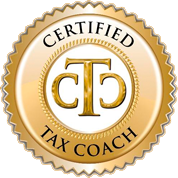Timing is the key to long-term investment success, especially because timing can have a dramatic impact on tax consequences for investment activities. If your investment is successful, at some point you will have to pay taxes on any capital gains—the profit you make from selling a property or investment. Appreciation on investments (increase in value over time) is not considered taxable income until that investment is sold. Though there has been a lot of talk about whether to introduce a tax on unrealized gains, currently no such tax exists on the federal level. This means that until an asset is sold and a gain is recognized, the capital gains tax does not apply.
Below is a quick overview of ways that timing the sale of an asset can curb your tax bill and important taxes to look out for as you plan your investments.
Know the Basics for Strategic Timing
From a tax perspective, the goal is typically to move from short-term to long-term capital gains tax. Short-term capital gains are taxed at ordinary income tax rates, which will be 22% or higher for middle-to-upper-class taxpayers. Long-term capital gains are taxed at a rate of 0%, 15%, or 20% depending on your income.
Because an asset has to be held for at least a year to be considered “long-term,” a simple strategy is to time the sale so that your profit qualifies for that lower tax rate. If there is no other significant disadvantage to delaying the sale of an asset, consider holding onto it until the tax outcome is to your advantage.
You can also apply a timing strategy when it comes to loss harvesting, which involves selling securities at a loss in order to offset taxes on other assets sold at a gain. If you saw sizable capital gains one year, look for unrealized losses in your portfolio—assets that are currently worth less than you paid for them. Talk with your Certified Tax Planner about whether selling these assets at a loss could offset those large gains.
Consider Your Tax Bracket
Taxpayers with any type of investment should be familiar with the income thresholds for long-term capital gains rates. Fortunately, the highest 20% rate doesn’t kick in until your income nears $500,000 (the threshold is $492,300 for single filers and $553,850 for married filing jointly). Taxpayers with less than $44,625 in taxable income will be exempt from taxes on any capital gains received within the year.
High-income earners may also be subject to the Net Investment Income Tax (NIIT). For single taxpayers who have over $200,000 in modified adjusted gross income (or $250,000 for married couples), any net investment income above the threshold will be taxed at 3.8%. Common types of net investment income include interest, dividends, capital gains, rental and royalty income, and passive activity income.
Watch Out for the Alternative Minimum Tax
Keep in mind that if you are seeing substantial net long-term gains, this may trigger the Alternative Minimum Tax (AMT). If you have high income and the majority of that income is coming in at a tax-advantaged rate (15% or 20%), the AMT exists to ensure you are paying what has been determined a fair minimum amount of tax.
How can you proactively plan for the possibility of AMT? This can be tricky since the threshold is a moving target—you can use tax software to calculate the “tentative minimum tax,” which is equal to:
[Taxable income based on AMT rules – AMT exemption] x AMT tax rate – AMT foreign tax credit
But the key is to factor AMT into your tax plan throughout the year. If you see that you may be nearing the income limit before AMT kicks in, look into ways to defer some of your capital gains.
The “Death Tax Plan”
This concept has a morbid name, but the potential tax savings makes this a topic worth investigating. If you are in retirement, nearing your late 70s or beyond, thinking through your estate plans could be the best tax strategy available. If you have unrealized capital gains—assets you’ve held onto that have appreciated over time—when those assets are passed on to your heirs, they will receive a “step up in basis.” This means that the heirs receive that asset at its current value, and in a way, the taxpayer has completely avoided tax on those assets. One thing to be mindful of is an estate tax may be due if your estate exceeds the value threshold for that year.
If the asset is depreciable and income-generating, like a rental property, this can especially benefit the heirs who may be able to claim that depreciation and lower their tax bill. Older taxpayers need to be cautious when making plans and apply strategy rather than being reactive. While it may seem wise to add your children to your bank account or the deed to your house, doing so will cause you to lose the “death tax plan” benefits. An alternative could be to appoint your children as power of attorney. Power of attorney allows that representative to take care of financial issues, make decisions about selling, and otherwise set up protection against scammers or people who commit elderly abuse—and you don’t lose the tax benefits of holding onto valuable assets until your passing.
Summary
Minimizing your capital gains taxes can be all about timing. Savvy taxpayers will take the effort to assess the gains they are likely to see, the losses they can leverage, and the timing for any assets they are looking to sell. For expert advice on tax planning for your investment, reach out to a Certified Tax Planner today.
Image by Sergei Tokmakov, Esq. https://Terms.Law from Pixabay






